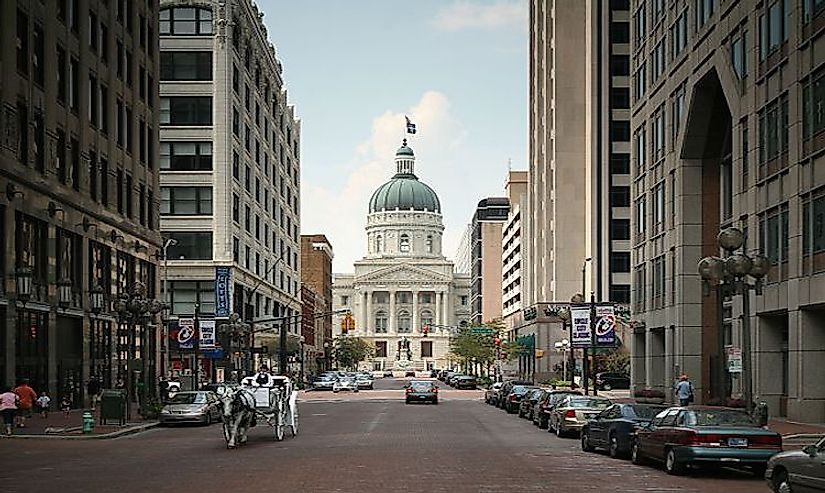What Is The Population Of Indianapolis, Indiana?

What Is The Population Of Indianapolis, Indiana?
Indianapolis is the most populous city in Indiana, hosting 12.8% of the state's total population. With a population of about 853,173 in 2015, the city is the most populous town in the Midwest, second only to Chicago. Indianapolis is the cultural and economic center of the Indianapolis metropolitan area with per capita income of $24,430; it is the 26th largest economic region in the US. The city sits on 372 square miles, housing two main multiracial communities the whites and blacks alongside minorities of Asians and Latinos. Christianity is the city's dominant religion, and most of the population identify with Roman Catholicism.
Vital Statistics Of The Population Of Indianapolis
The city’s total population in 2015 was 853,173. According to the 2010 US census, 33.7 years is the average Indianapolis age; 25% of the population registered as under 18; 20.7% of the city population were between 18-65 years, and 13.1% were senior citizens above 65 years. The female population is 442,100 while the male population is 411,114 indicating that for every 93 males there were 100 women. In the age bracket, the female to male ratio for 18 and over was 1:0.93. The per capita income of the city in the same year was $24,430, and about 18.9% of Indianapolis community lived below the poverty line with the biggest population being under eighteen, (28.3%). Out of the total population, 4.2% of residents identified as LGBT as of 2015 ranking the city as number 18 in the country’s LGBT community areas.
Racial Composition Of The Indianapolis Population
In the State of Indiana, Indianapolis is the most populous city with 12.8% of the state's total population. As per the 2010 census in the US, Indianapolis population was reported to have a primarily white community which comprised of 61.8% of the total population; 0.2% lower than the data recorded in 2014 and 20% less than in the 1970s. The Black or African community had a 27.5% which increased to 27.9% in 2014 and 10% higher than in the 1970s. The Asian community holds a 2.1%, Native Americans 0.3%, and other races taking a 5.5% of the population. The 2010 census data indicated that 2.8% of Indianapolis population was multiracial. The Hispanic community comprised of 9.4% of Indianapolis population.
Religion Of The People Of Indianapolis
Only about 42.42% of the city’s population identify as religious. 22% of the population does not have any religious affiliations. Roman Catholicism makes up the largest religious group with 11.31% of the religious affiliated. Baptist is the second largest group with 10.31%, Methodists 4.97%, Presbyterians 2.13%, and another 8.57% comprises other Christian faiths. Of the religiously affiliated population, 0.29 affiliated with Islam, 0.68% Jewish and 0.32 identifies with Eastern Religions. The most notable churches in the city are the Roman Catholic Archdiocese of Indianapolis, the Episcopal Diocese of Indianapolis, the Indiana-Kentucky Synod, and the Indiana Conference.
Indianapolis Households
In the 2010 census, the city recorded households totaling 332,199. The average household size was 2.42 with 3.08 as the mean size of a family. Out of the 332,199 households, 40.7% were nonfamily households while 59.3% had family homes. In the family home bracket, 28.2% of them had children under the age of 18; husband-wife families made up a 36.5% of the family households; 17.2% of them had a female householder without a husband while only 5.6% household had no female present. In the same census data, 32% of those without a family lived alone with 8.3% of the households being occupied by senior citizens of 65 years of age or older. The median household income in the city as recorded in the 2010 Census data was $42,704 and $53,161 as the median family income. Females working full time had a median income of $34,788 compared to $42,101 for males.
What Is The Population Of Indianapolis, Indiana?
| Rank | Race | % Of Population |
|---|---|---|
| 1 | White | 61.8% |
| 2 | Black or African American | 27.5% |
| 3 | Asian | 2.1% |
| 4 | American Indian | 0.3% |
| 5 | Other | 5.5% |
| 6 | Multiracial | 2.8 |







